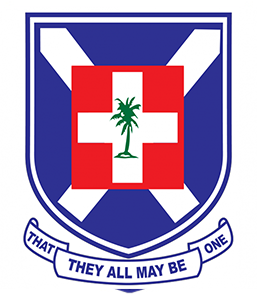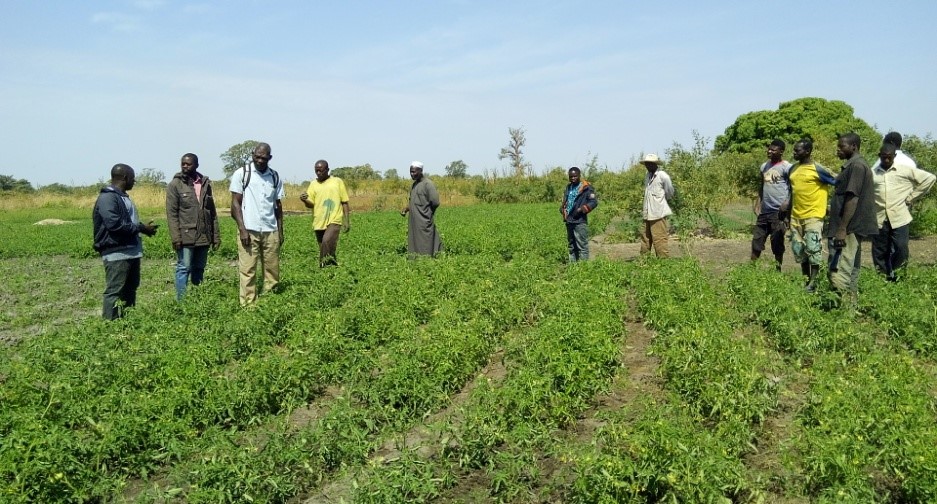PROJECT BACKGROUND
The Government of Ghana has received a loan from the International Fund for Agricultural Development (IFAD) and the African Development Bank towards the cost of implementing the Northern Rural Growth Programme (NRGP). The IFAD/ NRGP intervention is an integrated pro-poor socio-economic development programme driven by the Value Chain Approach (VCA) in four (4) commodity windows. The commodities include Women’s Crops (Shea, Moringa, Sesame and Baobab). The target area of NRGP comprises the three (3) northern regions of Ghana (Upper East, Upper West, Northern and the seven (7) districts of the Brong Ahafo Region contiguous to the Northern Region). The PCG-DSS-UP has entered into an agreement with NRGP as a Facilitation Agency in the implementation of the Women’s commodity (Shea and Baobab) value chain under Lot 1.
The operations of the PDSS-UP, are carried out by four satellite agricultural stations namely, Presby Agricultural, Station Sandema (PAS-S) Presby Agricultural, Station Garu (PAS G) Presby Agricultural Station Langbensi (PAS L) and Presby Agricultural station Tamale (Presby Mile 7) in ten districts in the Upper East and Northern Regions. The PAS-S operational districts are Builsa North, and Builsa South districts, PAS-G operates in Garu-Tempani, Binduri, and Pusiga, districts. The PAS-L catchment areas are in the West Mamprusi, and East Mamprusi, districts whiles Presby Mile 7 works in East Gonja, Savelugu Nanton and Tolon districts.
Project Objective
Women’s Window: To strengthen commodity value chains (shea and Baobab) to increase the income levels of women for sustainable growth and development
Vegetables window: To enhance sustainable vegetables commodity Value Chain scheme to increase food and income security
Introduction
To ensure timely implementation of project activities and achievement of project targets and objectives in all the districts, it is the over sight responsibility of PDSS Coordination office to carry out periodic internal monitoring of all the implementing districts/stations.
To achieve this, a monitoring team was composed to carry out the exercise at the various Stations and districts. The Team was made up of an M &E officer, the assistant accountant to the project and a key member of the management team of a visiting station. The accountant was charged with the responsibility of ensuring that all stations implemented the project activities in accordance with the agreed protocols and financial principles. The other team members were to monitor field activities and ensure participating districts were on track.
Objectives of the monitoring
The objectives of the monitoring visit were;
- To ascertain on the ground the level of implementation of project activities..
- To discuss and appreciate the level of communities and beneficiaries acceptance of the project.
- To participate in field implementation and assess the extent to which project protocols are followed’
- To discuss project documentation and reporting
- To identified best practices and gaps and suggest ways to improve on them.
- To ascertain how the accounting processes and documentations are adhered to according to the project financial regulations.
Expected Results:
- Ascertain the number of groups profiled.
- Baseline indicators of commodities in place.
- Appropriate documentation and reporting tools in place.
- Appropriate accounting principles and documentation are adhered to.
- The number of value chain actors identified.
Achieved Results:
- The ten districts visited revealed farmers were keen on strengthening of the commodities value chain.
- Baseline indicators of women’s window and Vegetables window identified as benchmarks for tracking project successes or otherwise..
- Stations finance officers were informed on the need to stick to agreed financial principles of the project.
- High level of stakeholders involvement especially MoFA and the district Assemblies.
- Number of groups profiled per district. However, stations were urged to work hard to achieve project targets.
- Stations using appropriate data collection tools eg groups and individual farmers profile collection tool, baseline survey check list etc.
Methodology
The monitoring team spent at least two days in each station. At each station the project implementing districts were visited and at least one community in each district.
The team used desk review and field participation. With desk review the team reviewed the various stations data collection tools, community entry protocols, and reports. Field participation tools such as observations, direct involvement in activities such as senstisations of communities and beneficiaries on the project and commodities and baseline data gathering were used.
This offered the team the opportunity to interact with farmer group members, The Team visited eleven communities in ten district
A designed check list was used as a guide to assess the performance of each station.
A debriefing was organized to climax the monitoring exercise at each station. Achievements and best practices were shared as well as the gaps and charting the way forward for improvement.
Communities Visited
| No | Station | District | Communities | Remarks | |
| 1 | PAS-S | Builsa North | Kalijiisa | Kandema | |
| 2 | Builsa South | Jiningsa | Kunkwak | ||
| 3 | PAS-G | Binduri | Could not visit any community | ||
| 4 | Pusiga | Podaguur | |||
| 5 | Garu | Barboaka | |||
| 6 |
Presby M7 |
Savelegu- Nanton | Diare | ||
| 7 | East Gonja | Fooshegu | |||
| 8 | Tolon | Kpana | |||
| 9 |
PAS-L |
West Mamprusi | Zangum | ||
| 10 | East Mamprusi | Namasim | |||
SUMMARY OF MAIN FINDINGS
- Community Entry and Sensitisations
The monitoring team took part in some community sensitisations. At Kalijiisa in the Builsa North district, one of the team members facilitated the meeting. After each sensitisations groups were formed based on commodity categories thus shea pickers, processors, baobab processors
It was observed that during sensitisation of groups on commodities, value chin actors were identified. However, it was revealed that there was a disjointed commodity chains as the farmers did not have any formal relation with any other actor (buyers, transporters etc).
The team interaction with farmers revealed that they were much interesting in the project especially working in the commodity chain to get ready markets for their produce. During the monitoring exercise, the team collated the number of groups profiled and as at the time of compiling this report the numbers were updated and presented below.
| Women’s Crop window | |||||
| Commodity | Station | # Groups | Male | Female | Total |
| Shea | Presby Mile 7 | 241 | – | 8,505 | 8,505 |
| PAS-Garu | 200 | 30 | 4,970 | 5,000 | |
| PAS-Langbensi | 80 | – | 1,840 | 1,840 | |
| PAS-Sandema | 90 | 24 | 2,226 | 2,250 | |
| Sub Total | 611 | 54 | 17,541 | 17,595 | |
| Baobab | Presby Mile 7 | – | – | – | – |
| PAS-Garu | – | ||||
| PAS-Langbensi | 10 | – | 45 | 45 | |
| PAS-Sandema | 22 | 10 | 430 | 440 | |
| Sub Total | 32 | 10 | 475 | 485 | |
Vegetables Window.
| Commodity | Station | # Groups | Male | Female | Total |
| Onion | Mile 7 | 25 | 420 | 240 | 660 |
| Garu | 230 | 617 | 5133 | 5750 | |
| Langbensi | 14 | 197 | 55 | 252 | |
| Sandema | 0 | 0 | 0 | 0 | |
| Sub Total | 269 | 1234 | 5428 | 6662 | |
| Pepper | Mile 7 | 152 | 3040 | 1420 | 4460 |
| Garu | 75 | 700 | 1325 | 1725 | |
| Langbensi | 30 | 690 | 88 | 778 | |
| Sandema | 30 | 660 | 24 | 684 | |
| Sub Total | 287 | 5090 | 2857 | 7647 | |
| Tomato | Mile 7 | 24 | 460 | 260 | 720 |
| Garu | 53 | 436 | 889 | 1325 | |
| Langbensi | 30 | 660 | 31 | 691 | |
| Sandema | 40 | 840 | 0 | 840 | |
| Sub Total | 147 | 2396 | 1180 | 3576 | |
| Grand Total | 703 | 8,720 | 9,465 | 17,885 |
- Baseline Survey
As at the time of the monitoring visits, baseline studies were on going in all the stations catchment areas. Two checklist were developed and being used by the resource persons conducting the baseline surveys to capture information on project indicators at FGD meetings and value chain actors discussions. Another data capturing template took basic information on individual farmer activities. ‘
Even though the baseline survey studies were not yet concluded, our field visit revealed that about 95% of farmers sell their produce in the open market as and when they needed to sell. However, a few mentioned that sometimes middle men and women enter into their communities to buy shea nuts. Most of them could not mention the names of the companies these middle men were working for. The staff and management of each station were encouraged to liaise up with the resource persons to speed up the process.
Documentation
The monitoring team inspected documentation and reporting tools at each station. The team and station staff discussed issues on reporting and documentation. There were efforts at each station to document the project data and reports. The station staffs were advice to ensure uniformity in the use of data collection tools and reporting templates/guides. This was said to facilitate easy data analysis and report collation.
On finances, the accountant and her colleagues discussed project accounting principles, documentation and reporting tools.
CHALLENGES
- The monitoring time allotted was short for each district considering the scattered nature of the districts and communities.
- Inability of some districts to meet targets in some commodity areas.
RECOMMENDATIONS
- All stations must intensify the education of community beneficiaries on project donors and objectives of the project
- All stations must endeavor to key in data gathered into appropriate data collection tools
- Stations that have comparative advantage in some commodities should do more to cover up for others.
- Documentation should be hard copies and soft copies as well
- All stations must ensure all documents are well filed.
- Project indicator framework that will be used to track progress of work should be in place and use by all stations.
- All stations must ensure that relevant project stakeholders are fully involved in the project implementation.
- In the next monitoring visit the team should include one MOFA staff from each implementing district
ACTION POINTS
At debriefings the following points were tabled for action
- Draw a monitoring schedule and share with all project staff
- Soft copies of all groups profiled and other data should be sent to the coordinating office
- Station staff to work assiduously to meet targets
CONCLUSION
The activity was successfully implemented as planned. The cooperation between the team and the stations was encouraging as it afforded the team the needed support it required to do its work as required.
It is our hope that the recommendations outlined and many others will be implemented to the latter ensure that PDSS –Upper presbytery sail through the project implementation successfully..

